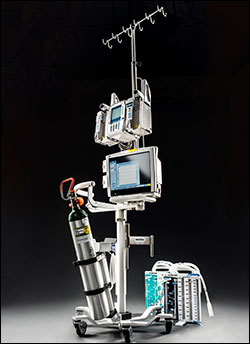 Nurses at Texas Children’s are natural innovators. They ask questions, ponder processes and think outside the box to develop solutions that improve care and outcomes for patients. For nurses Michael Pickett, Nicholas Keith and Anthony Bentley, a shared passion for patient-centered innovation ultimately brought them together.
Nurses at Texas Children’s are natural innovators. They ask questions, ponder processes and think outside the box to develop solutions that improve care and outcomes for patients. For nurses Michael Pickett, Nicholas Keith and Anthony Bentley, a shared passion for patient-centered innovation ultimately brought them together.
“After working on projects of our own, we talked and realized we all faced the same kinds of challenges and frustrations,” said Keith, a float pool nurse at Texas Children’s. “Knowing how grueling the process can be to implement a new idea, we set out to develop a council that would support frontline staff using a bottom-up approach to give life to ideas from end users.”
The idea to create a venue that would bring end user needs, ideas and solutions to clinical practice provided the visionary roadmap they needed to launch Texas Children’s first-ever Innovative Solutions Nursing Council that would be run entirely by staff nurses.
“While none of us had prior shared governance experience, we approached our nursing leaders, Emily Weber and Charley Elliott, who supported our idea,” said Pickett, a nurse practitioner in the Anesthesia section at Texas Children’s. “We presented our strategic plan at several leadership meetings. Our leaders supported us and assigned a senior project manager who helped us with the council start-up process.”
After months of planning, the council – comprising 12 staff nurses and an advisory team – held its first operational meeting in May 2016. The broad array of specialty areas represented on the council included physical therapy, supply chain, biomedical engineering, information services, business development, nursing quality and nursing research.
Developing solutions to support new ideas
Once a month for an hour and a half, the council and support staff meet to brainstorm new ideas, deliver strategic guidance, and create and implement action plans for nurse-led projects that address particular needs or concerns. This unique style of collaboration sets the stage for significant results.
The council receives ideas or identified needs from various sources. For example, a staff member may have a solution but not know how to get support; or a leadership initiative or staff member may identify a need, but have no clear solution for how to address the challenge. Once an idea is introduced, the process of developing a solution begins with council members conducting a thorough needs and solutions analysis.
“Combining research data, surveys and end-user feedback, we simulate and prototype the solution to develop and vet the proof of concept before presenting collaborative recommendations to leadership for their support,” Pickett said. “We are continuously evaluating and making adjustments throughout this process to ensure that the final design of the product will meet the specific needs of the end user.”
Collaboration leads to innovative solutions
Since the council was formed, the team has already reached innovative milestones that would not have been possible without support from collaborative partners and executive leaders including departmental colleagues, nursing leadership and the council leadership sponsors.
Working with Pryor Products, a leading manufacturer of IV poles and accessories, the council helped staff co-design a prototype IV pole to which an oxygen canister and chest tubes could be more easily attached. The council also worked with GCX, a worldwide leader in medical instrument mounting, to develop a more secure method for mounting a monitor on the IV pole.
Previously in the cardiovascular intensive care unit, the attachment of these medical items created a patient safety concern. Oxygen tanks were hung too loosely, allowing them to swing. Monitors and chest tubes were tied to the poles with rope and secured with tape and trach ties. Heart line transducers were hung at inappropriate levels and would not fit on the poles at patient level.
“Our innovations provide a safe and secure holder for oxygen tanks and chest tubes,” Keith said. “We now have a mount on the IV pole that keeps our monitors visible and holds them securely in place and a pole extension for our transducers that will remain at the appropriate level of the patient.”
Another example was the production of a 360-degree virtual reality video that simulated, inside a pre-construction mock-up space, proposed neurosurgical and MRI facilities for Texas Children’s Legacy Tower. The video proved to be a valuable tool that allowed the team and leaders involved in the design process to re-evaluate the space in real time.
“This video has benefited staff and leaders because it provides a 360-degree view of the room,” Keith said. “The viewer can select which point of view to experience by simply restarting the video and changing their focus.
The council has many more projects in the pipeline, including developing solutions to reduce neonatal vibration in isolettes and resolving skin care challenges in patient care units.
“Our council is a huge resource for Texas Children’s,” said Bentley, a nurse with Texas Children’s Kangaroo Crew. “Employees and staff now have a place where their ideas can take root, be nurtured, and one day produce measurable outcomes for patients and their families. We are grateful to our leaders for their instrumental and continued support that led to the success of this project.”

